Intel X58 Roundup: Six $300+ Platforms Compared
Rampage II Extreme BIOS, Software, And Accessories
A CPU reference clock limit of 500 MHz could take a lowly Core i7 920 to an astounding 10 GHz, that is, if only CPU technology were so kind. Other interesting frequency limits are a maximum DRAM-clock-to-reference clock ratio of 8:1, (16:1 data rate). The resulting 2,133 MHz data rate at stock reference clock is just a little more than the memory controllers most Core i7 processors can stably support.
| BIOS Frequency And Voltage Settings | |
|---|---|
| CPU Reference Clock | 100 to 500 MHz (1 MHz) |
| Clock Multiplier Adjustment | Yes |
| DRAM Ratios | DDR3-800 to DDR3-2133 (266 MHz) |
| PCIe Clock | 100 to 200 MHz (1 MHz) |
| CPU Vcore | 0.8500 to 2.500 volts (0.00625 volts) |
| QPI/DRAM (Uncore) Voltage | 1.20 to 2.50 volts (0.00625 volts) |
| IOH (Northbright) Vcore | 1.10 to 1.70 volts (0.020 volts) |
| ICH (Southbridge) Vcore | 1.10 to 1.70 volts (0.020 volts) |
| DRAM Voltage | 1.50 to 2.76 volts (0.020 volts) |
| CAS Latency Range | tCAS:3-11; tRCD: 3-10; tRP: 3-10; tRAS: 3-31 |
These pertinent controls, along with several lesser-known settings, are found across several BIOS menus. Note that Intel Turbo Mode requires SpeedStep to be enabled on the Rampage II Extreme.
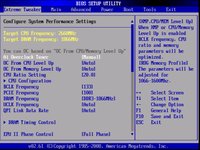

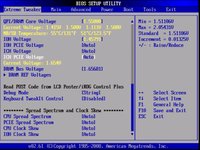
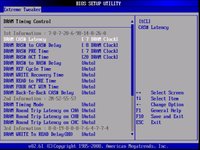
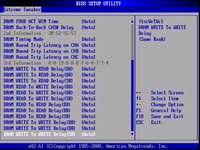

Other menus allow BIOS profiles to be saved, restored, or transferred to a different system.
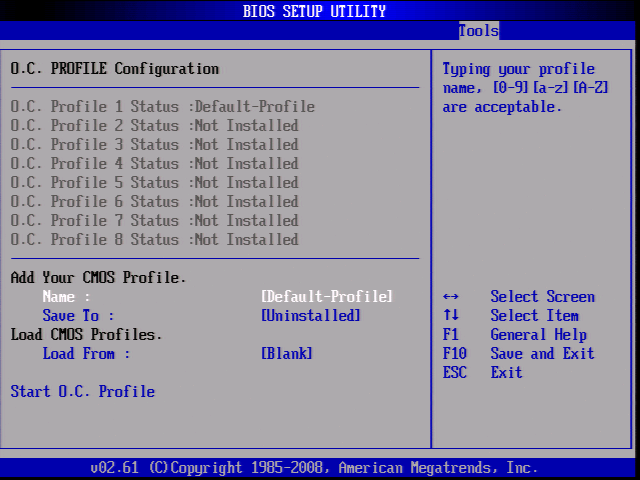

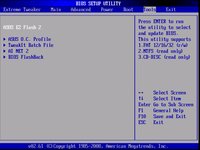
The Rampage II Extreme even allows copying between primary and backup BIOS ICs from within BIOS.
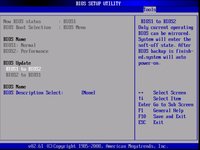
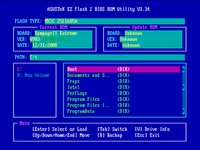
Asus EZ Flash 2 allows one to update BIOS from several drive formats, including non-bootable USB flash drives.
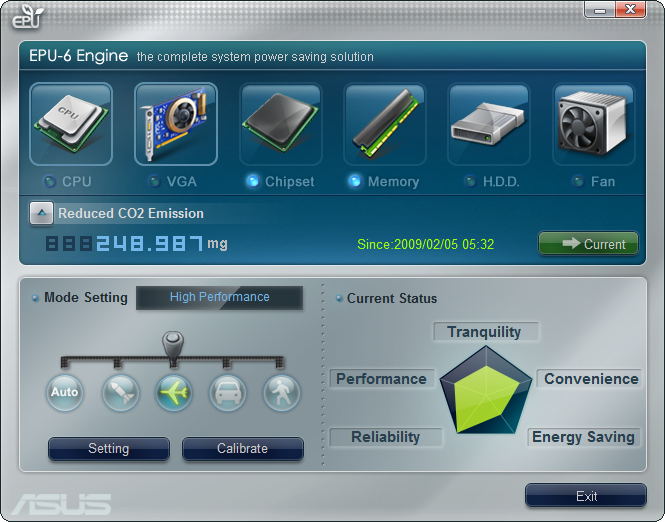
Asus' EPU-6 Engine is an automatic underclocking software that also adds a slight overclock (2%) in Turbo mode. Performance mode represents standard settings, while both medium and maximum power savings modes drops the reference clock by 2% and the CPU multiplier to 12x. Effectiveness of this software is questionable, as our system drew 182 W when idle at both stock settings and with EPU power-saving modes enabled. Furthermore, the power-saving settings didn’t respond properly to changes in CPU load, keeping our Core i7 920 at 1,570 MHz with eight threads of Prime 95 running. Peak power dropped by 72 W, but only because the CPU was underclocked, and that’s something anyone with a little BIOS experience could do without additional software.
Accessories
Get Tom's Hardware's best news and in-depth reviews, straight to your inbox.
| Accessories | |
|---|---|
| Documentation and Software | Motherboard Manual |
| Motherboard Driver DVD | |
| Hardware | 1 x SupremeFX X-Fi Audio Riser |
| 1 x 80-pin Ultra-ATA Cable | |
| 6x SATA Cable | |
| 1 x Auxialiary VRM Fan | |
| 1 x External LCD Poster | |
| 1 x USB/FireWire Breakout Plate | |
| 4 x ProbeIt voltage probe leads | |
| 1 x 3-way SLI Bridge | |
| 1 x SLI Bridge | |
| 1 x 4-pin to SATA Power Adapter (2 drives) | |
| 1 x LED Backlit I/O Panel Shield | |
| 1 x Asus Q-Connector Kit |
While the Intel X58 Express chipset supports both Nvidia SLI and AMD CrossFire technologies, it ships with SLI bridges only. Dual-card and three-way bridges are included, along with the SupremeFX X-Fi audio riser card, an auxiliary chipset/VRM cooling fan, an LCD system status display, and enough cables to complete most builds.

Current page: Rampage II Extreme BIOS, Software, And Accessories
Prev Page Asus Rampage II Extreme Next Page DFI LANParty UT X58-T3eH8-
arkadi Some times it really hard to stay objective, but you did it, grate article.Reply
I would consider few other aspects as well, like service and RMA statistics.
In some countries you wont have official representation of a vendor, and in case of RMA you can end up with different MB model, usually not for the best.
From my experience i recommend for most of you to get more common boards. -
wdmso "Intel X58 Roundup: Six $300+ Platforms Compared " this title will leadReply
some less informed readers that they can get the cpu memory and MB for 300.00.
It should read "Intel X58 Roundup: Six $300+ Motherboards Compared"
the title is misleading -
neiroatopelcc I can't afford an i7 system, but when I see beautiful motherboards like that dfi and the foxconn board, I wish I could! That foxconn board almost makes me feel like looking at a beautifully built soltek board with uniform colors and good looks. Looks ain't everything, but looks do matter. I love my gigabyte board because it works great, but I would love it even more if it came 'styled' like the dfi green or the foxconn red board ....Reply -
When you review the less-expensive X58 boards, I'd appreciate it if you would evaluate them in terms of which is the likely to be the most stable, most reliable, and most problem-free non-overclocked board. Thanks.Reply
-
phantom93 Lol nice article, lol i love the soldering job on the port-80 diagnostics digits for the DFI lan party board.Reply -
inversed It seems odd to have skipped mentioning the Gigabyte EX58's driver-less RAID capability. I was able to get Windows XP to boot off of a mirrored RAID without needing the floppy and the initial setup went very quickly. One unfortunate aspect of this mobo, however is that it cannot output digital audio and analog audio at the same time. So no switching between surround sound and headphones without changing settings in the audio control software.Reply -
jeffunit Though the core i7 is a crazy fast processor, it doesn't offer ECC support. That is why I just bought an amd phenom II 940. Perhaps 'gamers' don't care about ECC but only how many graphics cards they can stuff in the mb. On the other hand, IBM estimated 1 error per gig per week. So at 4gb, that is less than 2 days between errors. Perhaps that isn't noticeable with microsoft operation systems, but I keep my machines up for weeks or months at a time...Reply
My cheap asus mb not only supports ECC, but ECC scrubbing, chipkill, and more. Who cares how fast a computer is, when it crashes often?
-
jeffunit Though the core i7 is a crazy fast processor, it doesn't offer ECC support. That is why I just bought an amd phenom II 940. Perhaps 'gamers' don't care about ECC but only how many graphics cards they can stuff in the mb. On the other hand, IBM estimated 1 error per gig per week. So at 4gb, that is less than 2 days between errors. Perhaps that isn't noticeable with microsoft operation systems, but I keep my machines up for weeks or months at a time...Reply
My cheap asus mb not only supports ECC, but ECC scrubbing, chipkill, and more. Who cares how fast a computer is, when it crashes often?
-
Crashman wdmso"Intel X58 Roundup: Six $300+ Platforms Compared " this title will lead some less informed readers that they can get the cpu memory and MB for 300.00.It should read "Intel X58 Roundup: Six $300+ Motherboards Compared"the title is misleadingReply
You're right: I belive the word "Platform" was substituted by another editor to make the title shorter, so it would fit better in the headline bar. I might have chosen "Mobos" myself when encountered with such an issue, but they don't like using slang in titles.
temporary87654When you review the less-expensive X58 boards, I'd appreciate it if you would evaluate them in terms of which is the likely to be the most stable, most reliable, and most problem-free non-overclocked board. Thanks.
Good suggestions, but the problem is that all these boards were stable and built for reliability when overclocked. Using lower speeds increases stability and reliability, and you just cannot exceed "100% Stability". All the boards also used high-quality electrical components, which means a reliability test would require years to reveal any differences.
inversedIt seems odd to have skipped mentioning the Gigabyte EX58's driver-less RAID capability. I was able to get Windows XP to boot off of a mirrored RAID without needing the floppy and the initial setup went very quickly. One unfortunate aspect of this mobo, however is that it cannot output digital audio and analog audio at the same time. So no switching between surround sound and headphones without changing settings in the audio control software.
We'll have to see what we can do about getting the author some digital speakers or a digital receiver headset to test for such issues in the future. That particular issue hadn't come up prior to testing. -
ryanaxiom What about the Gigabyte UD5? I guess it doesn't fall in the 300+ category at $288 from Newegg, but stil...Reply
It has all the benefits of the EX-58-Extreme minus the gigantic NB cooler, but also allows use of an x8 RAID card in the open ended slot (I have one installed) and if you get straight risers/wearout protectors you can install a x1 sound card in the top slot! The best of all worlds!!!
The only small complaint I have is that sometimes I have to try to boot twice since the AHCI bios doesn't always want to load after post.
